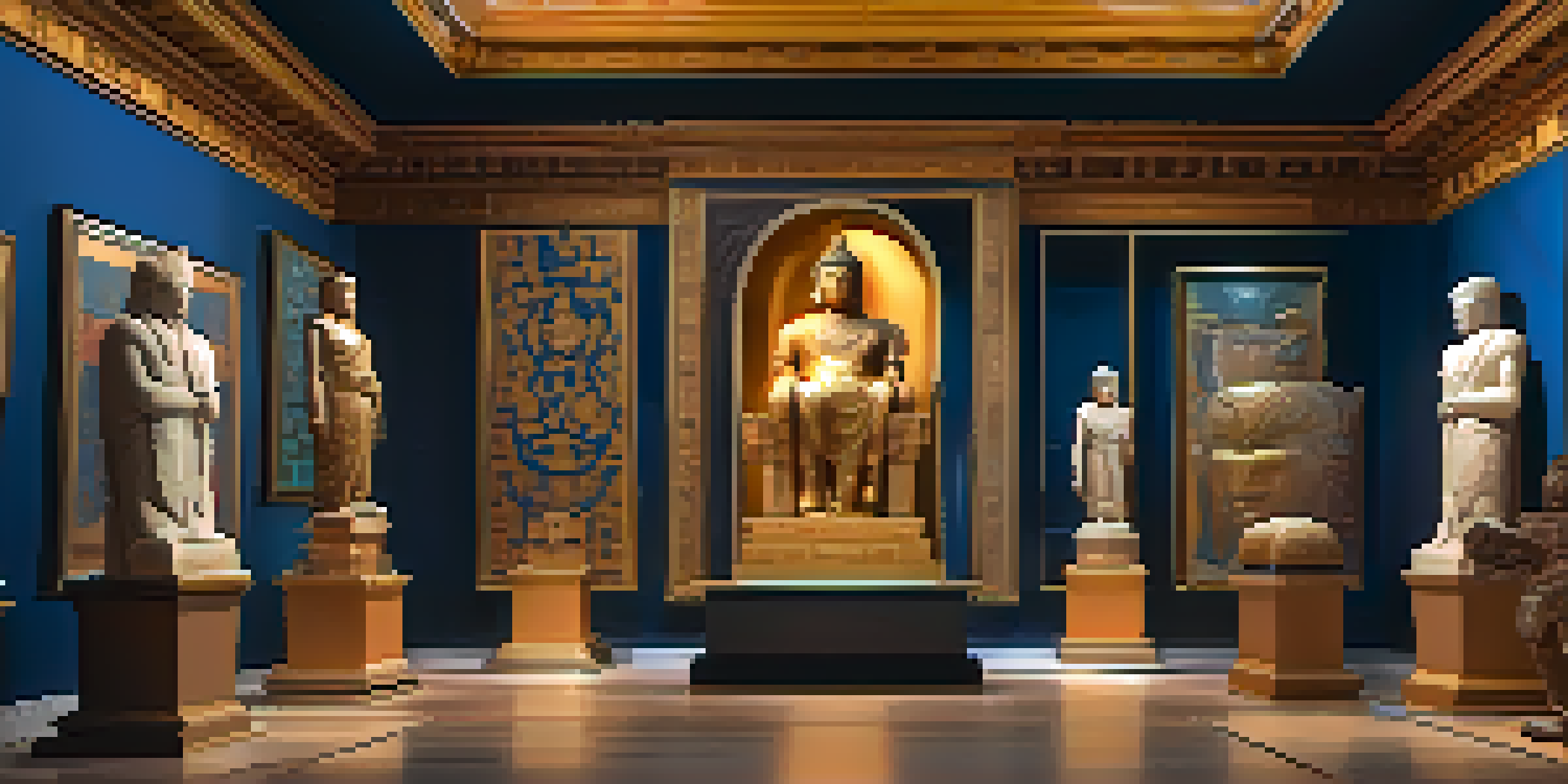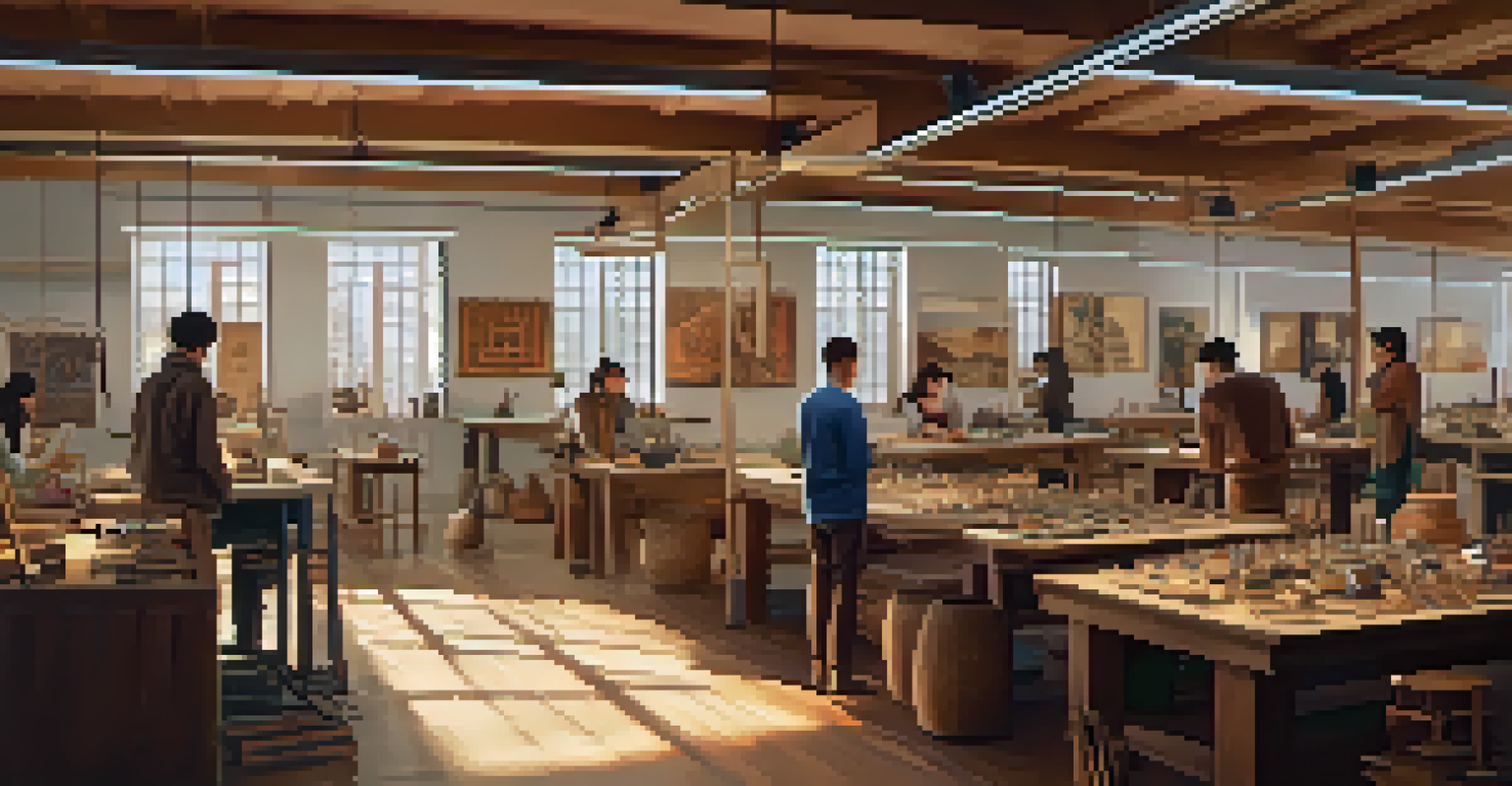Cultural Heritage Preservation: The NFT Revolution

Understanding Cultural Heritage and Its Importance
Cultural heritage encompasses the traditions, artifacts, and values that define a community or nation. It serves as a bridge connecting past generations to the present, enriching our understanding of history and identity. Preserving this heritage is crucial, as it fosters pride and belonging among communities, ensuring that future generations can appreciate their roots.
Cultural heritage is the foundation of our identity; it informs our sense of belonging and shapes our future.
However, cultural heritage faces numerous threats, from urbanization to climate change. These factors can erode historical sites and artifacts, leading to potential loss. Thus, finding innovative ways to preserve these treasures becomes essential for maintaining cultural continuity.
In recent years, technology has emerged as a powerful ally in this endeavor. Among these advancements, Non-Fungible Tokens (NFTs) have garnered attention for their potential to revolutionize cultural heritage preservation, offering new avenues for safeguarding and sharing our collective history.
What Are NFTs and How Do They Work?
Non-Fungible Tokens, or NFTs, are unique digital assets verified using blockchain technology. Unlike cryptocurrencies, which are interchangeable, each NFT holds distinct information that makes it one-of-a-kind. This characteristic lends itself well to representing cultural artifacts, artworks, and historical documents in a digital format.

When an NFT is created, it essentially becomes a digital certificate of ownership for a specific item. This can include anything from a digital painting to a virtual 3D model of an ancient statue. The blockchain ensures that the provenance of each NFT is transparent and secure, providing a trustworthy means of tracking ownership over time.
Cultural Heritage Needs Preservation
Cultural heritage connects us to our past and fosters community pride, making its preservation essential for future generations.
As NFTs gain popularity, they open up exciting possibilities for cultural institutions. By converting physical artifacts into NFTs, museums and galleries can create digital replicas that can be sold or shared, increasing access while also generating funds for preservation efforts.
NFTs as a Tool for Cultural Heritage Preservation
The integration of NFTs into cultural heritage preservation strategies allows for innovative approaches to safeguarding artifacts. By digitizing objects and creating NFTs, institutions can ensure that even if the physical item is damaged or lost, a digital representation remains intact. This increases the resilience of cultural heritage against threats.
The past is not dead; it is living in us, and we are its faithful servants.
Moreover, NFTs provide a platform for sharing cultural heritage with a global audience. Digital access means that people around the world can experience and appreciate artifacts that they may never have the opportunity to see in person. This democratization of access fosters greater understanding and appreciation of diverse cultures.
Additionally, NFTs can serve as a revenue source for cultural institutions. By selling limited editions or exclusive digital content, these organizations can generate funds that can be reinvested into preservation efforts, ensuring the longevity of heritage sites and artifacts.
Challenges and Concerns of NFTs in Preservation
While the benefits of NFTs in cultural heritage preservation are promising, there are challenges and concerns that must be addressed. One major issue is the environmental impact of blockchain technology, particularly in terms of energy consumption. As the NFT market grows, finding eco-friendly solutions becomes increasingly important to balance innovation with sustainability.
Another concern is the potential for commodification of culture. When cultural artifacts are turned into NFTs, there is a risk that they may be treated as mere commodities rather than cherished pieces of heritage. This could lead to misrepresentation or inappropriate use of cultural symbols, which can alienate communities.
NFTs Enhance Cultural Access
Non-Fungible Tokens (NFTs) offer innovative ways to digitize and share cultural artifacts, increasing global access and appreciation.
Lastly, issues surrounding copyright and ownership complicate the landscape of NFTs. Determining who has the right to create and sell an NFT based on a cultural artifact can be contentious, necessitating clear guidelines and ethical considerations to protect the rights of original creators and the communities they represent.
Successful Examples of NFT Implementations
Several cultural institutions and artists have already embraced NFTs to preserve and promote heritage. For instance, the British Museum launched a series of NFTs featuring digital replicas of ancient artifacts. This initiative not only raised funds for preservation but also engaged a younger audience through digital art.
Another noteworthy example is the collaboration between the Louvre and digital artists to create NFTs of famous artworks. By offering these digital representations for sale, the museum not only diversifies its revenue sources but also sparks conversations about the intersection of tradition and modern technology.
These cases highlight the potential of NFTs to enhance cultural engagement and preservation strategies. As more institutions explore this avenue, we can expect to see innovative projects that blend technology with heritage, ensuring that our cultural treasures are safeguarded for future generations.
The Future of Cultural Heritage with NFTs
As we look ahead, the future of cultural heritage preservation is likely to be increasingly intertwined with digital technology, particularly NFTs. The potential for creating immersive experiences through virtual reality and augmented reality, combined with NFTs, could revolutionize how we engage with history and culture.
Imagine visiting a historical site and using an app to unlock digital artifacts through NFTs, offering layers of information and interactive storytelling. This form of engagement not only enhances appreciation for cultural heritage but also encourages responsible stewardship among visitors.
Challenges of NFTs in Culture
Despite their potential, NFTs raise concerns about environmental impact, cultural commodification, and copyright issues that need addressing.
Furthermore, as the NFT space continues to evolve, we may see greater collaboration between artists, technologists, and cultural institutions. This synergy can lead to innovative projects that not only preserve heritage but also inspire new creative expressions rooted in tradition, ensuring that cultural narratives remain vibrant and relevant.
Conclusion: Embracing Change for Preservation
In conclusion, the NFT revolution presents a unique opportunity for cultural heritage preservation. By leveraging this technology, we can safeguard our past while simultaneously engaging with a broader audience in meaningful ways. The fusion of tradition and innovation can breathe new life into heritage conservation efforts.
While challenges remain, a proactive approach that prioritizes ethics and sustainability can help navigate the complexities of the digital landscape. As cultural institutions adapt to these changes, they can become stewards of both physical and digital heritage, ensuring that our shared history is cherished and accessible.

Ultimately, embracing NFTs is not just about preserving artifacts; it's about fostering a deeper understanding of our collective identity and promoting cultural appreciation across generations. As the world continues to change, so too should our methods of preservation, allowing us to honor our past while inspiring the future.